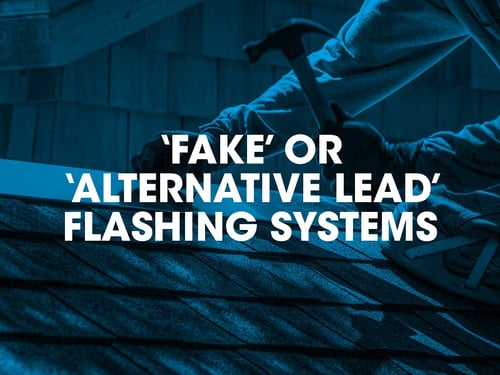Details
Alternative lead products systems:
- Are lighter than lead and easier to install.
- Require no hot work or specialist equipment and in some cases; the self-adhesive flashing can be bonded directly to the tiles to give a weatherproofing seal.
- Some products are capable of achieving a 20-year life expectancy according to testing results third-party certification documents.
- The products have been tested and approved for use at abutments, stepped flashings, chimneys and dormers junctions.
- Are acceptable for meeting the requirements of our Warranty Technical Manual; if the product has a UKAS or European equivalent independent third party ‘product approval’ certification such as a BBA or BDA.
The common make up of these products is based on an aluminium mesh reinforcement which is then coated both sides with a number of different materials, typically:
- layers of polyisobutylene & additives, or
- PUR colour coating, or
- Elastomeric bitumen & additives
The products can be generally worked in the same way as lead flashings and can be cut using scissors, knife or snips.
With some products, a roller is recommended for joining pieces.
The products are supplied in rolls and should be stored upright on a dry clean surface, protected from sunlight before installation.
Several of the products require fixing with butyl strips in order to adhere to the tiles or slates. Others have specific adhesives to be used and in most cases the products have a protective film or foil backing lower face which is laid onto the roof covering.
Recommendations
In addition to the requirements laid down in our Warranty Technical Manual Section 11 Roofs:
All ‘alternative lead’ products used must be used in strict accordance with the manufacturer’s guidance and the ‘third party’ Product approval certification, as it may have specific recommendations and conditions of use that could be different from a seemingly similar product.
For example:
The minimum lap requirement appears to differ for several manufacturers’ product specifications according to third party certification and can range between 30mm up to 150mm.
Although many of the ‘Alternative Lead’ flashings are proven to be used on both pitched and flat roofs, there are exceptions and according to some third party certification, certain manufacturer’s products are approved for pitched roof only situations. Also, some manufacturer’s products are not suitable for use on Natural slate.
Summary
To meet the requirements of our Warranty Technical Manual; only products that have a ‘current’ UKAS or European equivalent third party ‘product approval’ certification such as a BBA or BDA can be used. The conditions of the third party ‘product approval’ certificate must be carefully met for the given situation proposed.

